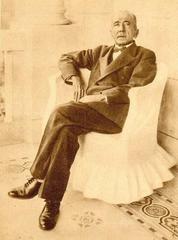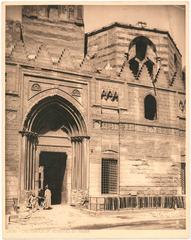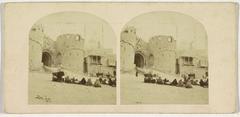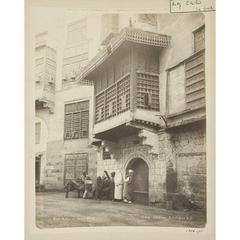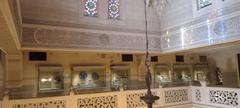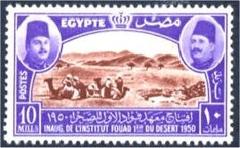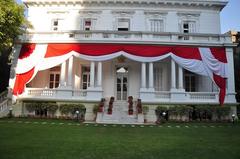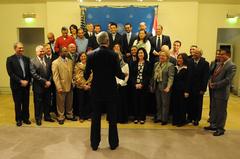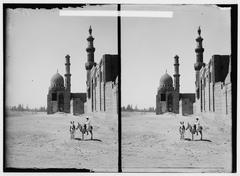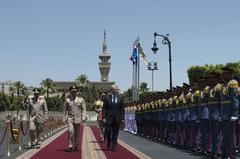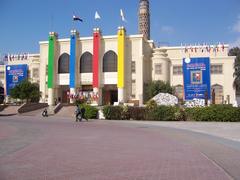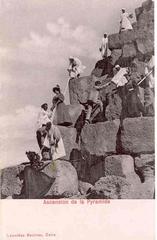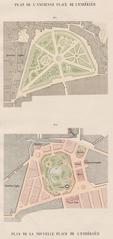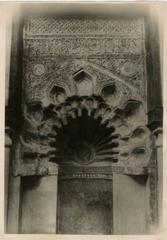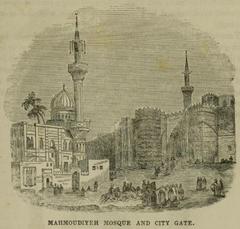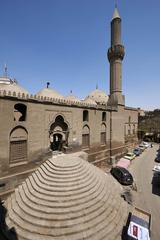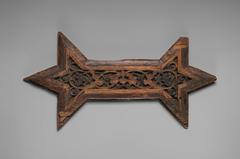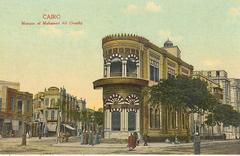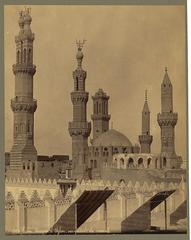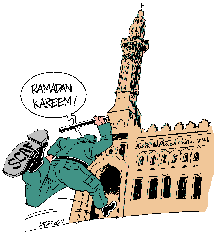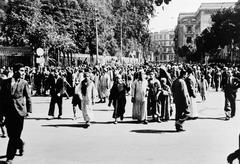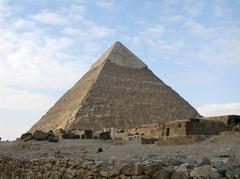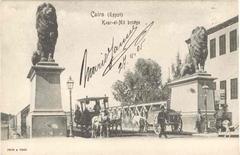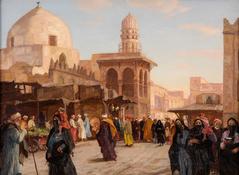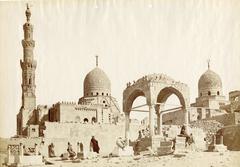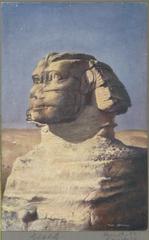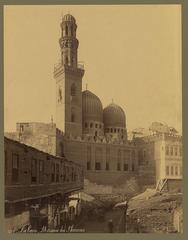Visiting كوبري 6 أكتوبر: Hours, Tickets, and Historical Insights
Date: 17/07/2024
Introduction
The 6th of October Bridge, known locally as كوبري 6 أكتوبر, is a remarkable feat of engineering and a crucial part of Cairo’s transportation network. Spanning the Nile River and connecting key districts such as Dokki, Zamalek, and downtown Cairo, this bridge is more than just an infrastructure marvel; it is a symbol of national pride and historical significance. Named after the pivotal date of October 6, 1973, marking the start of the Yom Kippur War, the bridge stands as a testament to Egypt’s resilience and modernization efforts (Egypt Today).
Constructed in phases starting in the 1960s, the 6th of October Bridge was designed to alleviate Cairo’s notorious traffic congestion, a problem exacerbated by rapid urban expansion and population growth. The bridge’s development involved advanced engineering techniques, including the use of pre-stressed concrete and steel, to ensure its durability and seismic resilience (Egyptian Museum). Over the decades, it has been extended and modernized to accommodate increasing traffic, now stretching approximately 20.5 kilometers, making it one of the longest bridges in Africa and the Middle East.
For visitors, the 6th of October Bridge offers not just a passageway but also a unique vantage point to view Cairo’s sprawling metropolis. Whether you’re an early morning explorer or a sunset photographer, the bridge provides stunning views of the cityscape, the Nile, and nearby iconic landmarks such as the Cairo Tower and the Egyptian Museum. This comprehensive guide aims to provide you with all the essential information, historical insights, and travel tips to make your visit to the 6th of October Bridge a memorable experience.
Table of Contents
- [Historical Background of كوبري 6 أكتوبر](#historical-background-of-كوبري-6-أكتوبرhistorical-background-of-كوبري-6-أكتوبر)
- [Conception and Planning](#conception-and-planningconception-and-planning)
- [Construction Phases](#construction-phasesconstruction-phases)
- [Naming and Symbolism](#naming-and-symbolismnaming-and-symbolism)
- [Expansion and Modernization](#expansion-and-modernizationexpansion-and-modernization)
- [Visitor Information](#visitor-informationvisitor-information)
- [Visiting Hours and Ticket Prices](#visiting-hours-and-ticket-pricesvisiting-hours-and-ticket-prices)
- [Travel Tips](#travel-tipstravel-tips)
- [Nearby Attractions](#nearby-attractionsnearby-attractions)
- [Socio-Economic Impact](#socio-economic-impactsocio-economic-impact)
- [Challenges and Controversies](#challenges-and-controversieschallenges-and-controversies)
- [Future Prospects](#future-prospectsfuture-prospects)
- [FAQ](#faqfaq)
- [Conclusion](#conclusionconclusion)
- [References](#referencesreferences)
Historical Background of كوبري 6 أكتوبر
Conception and Planning
The inception of the 6th of October Bridge dates back to the early 1960s as a solution to Cairo’s traffic woes, exacerbated by rapid population growth and urban expansion. The initial planning phase included extensive feasibility studies and urban planning assessments to determine the most effective route and design. This project was part of a broader urban development strategy aimed at modernizing Cairo’s infrastructure and improving connectivity within the city.
Construction Phases
The construction of the bridge was executed in multiple phases over several decades. The first phase began in 1969, focusing on the section between Ramses Square and the Giza Governorate, and was completed in 1972. Subsequent phases expanded the bridge over the next 30 years, with construction often occurring at night to minimize disruption. Advanced engineering techniques and materials were used, including pre-stressed concrete and steel, to ensure the bridge’s durability. The design also incorporated seismic considerations due to Cairo’s susceptibility to earthquakes.
Naming and Symbolism
The bridge was named after October 6, 1973, marking the start of the Yom Kippur War. This date, celebrated as a national holiday in Egypt, symbolizes national pride and military success. Naming the bridge after this date imbued it with a sense of historical importance.
Expansion and Modernization
Over the years, the bridge has undergone several expansions and modernization efforts to accommodate increased traffic. Notably, the bridge was extended to its current length of approximately 20.5 kilometers in the late 1990s and early 2000s, making it one of the longest bridges in Africa and the Middle East. Modernization efforts have included advanced traffic management systems to reduce congestion.
Visitor Information
Visiting Hours and Ticket Prices
The 6th of October Bridge is open 24/7, and there is no entrance fee. However, tolls may apply for certain sections. Always check for the latest updates on traffic conditions and toll prices.
Travel Tips
- Best Time to Visit: Early mornings or late evenings are ideal to avoid peak traffic.
- Photography: There are several spots along the bridge that offer stunning views of Cairo. For the best photos, visit during sunrise or sunset.
- Guided Tours: Consider joining a guided tour to learn more about the bridge’s history and significance.
Nearby Attractions
- Cairo Tower: Offers panoramic views of the city and is a short drive from the bridge (Cairo Tower).
- Egyptian Museum: Located in Tahrir Square, it houses an extensive collection of ancient Egyptian artifacts (Egyptian Museum).
- Giza Pyramids: A must-visit site, just a short drive away.
Socio-Economic Impact
The construction and expansions of the bridge have significantly reduced travel times within Cairo, facilitating commerce and improving access to essential services. The bridge has also spurred economic development in surrounding areas and has become an iconic landmark.
Challenges and Controversies
The project faced numerous delays and budget overruns during its initial phases. Additionally, the construction required the displacement of several communities, raising concerns about social equity. In recent years, maintenance and traffic congestion have been ongoing challenges, necessitating regular repairs and stricter traffic regulations.
Future Prospects
Plans are underway to further enhance the bridge’s capacity, including the potential addition of dedicated lanes for public transit and non-motorized vehicles. These efforts aim to ensure the bridge remains a vital and sustainable part of Cairo’s urban landscape.
FAQ
Q: What is the best time to visit the 6th of October Bridge?
A: Early mornings or late evenings are ideal to avoid peak traffic.
Q: Are there any fees to cross the bridge?
A: While there is no entrance fee, tolls may apply for certain sections.
Q: What nearby attractions should I visit?
A: Nearby attractions include Cairo Tower, the Egyptian Museum, and the Giza Pyramids.
Conclusion
The 6th of October Bridge, or كوبري 6 أكتوبر, encapsulates the essence of Cairo’s dynamic evolution, merging historical significance with modern engineering prowess. As one of the longest bridges in Africa and the Middle East, it not only facilitates daily commutes for countless residents but also stands as a symbol of national pride, commemorating Egypt’s pivotal military achievements (Cairo Tower).
Visitors to the bridge can immerse themselves in its rich history and enjoy breathtaking views of the Nile and Cairo’s skyline. With no entrance fees and 24/7 accessibility, it is a convenient and rewarding destination for both locals and tourists alike. The bridge’s proximity to attractions like the Egyptian Museum, Cairo Tower, and the Giza Pyramids further enhances its appeal, making it a central point for exploring the city’s cultural and historical treasures (Gayer-Anderson Museum).
As Cairo continues to grow and modernize, the 6th of October Bridge remains a steadfast symbol of the city’s resilience and ambition. Future plans to enhance its capacity and infrastructure will ensure that it continues to serve as a vital link in Cairo’s transportation network, reflecting the city’s ongoing commitment to progress and development (Al-Azhar Park). For those planning a visit, this guide provides all the necessary information to navigate and appreciate one of Cairo’s most significant landmarks.
References
- Exploring the 6th of October Bridge in Cairo - History, Visiting Hours, and Travel Tips, 2024, Egypt Today (source)
- Complete Guide to Visiting Kobri 6 October in Cairo - Tips, Attractions, and More, 2024, Egyptian Museum (source)
- Top Attractions Near كوبري 6 أكتوبر - Cairo’s Must-Visit Historical Sites and Landmarks, 2024, Cairo Tower (source)
- Top Attractions Near كوبري 6 أكتوبر - Cairo’s Must-Visit Historical Sites and Landmarks, 2024, Gayer-Anderson Museum (source)
- Top Attractions Near كوبري 6 أكتوبر - Cairo’s Must-Visit Historical Sites and Landmarks, 2024, Al-Azhar Park (source)
